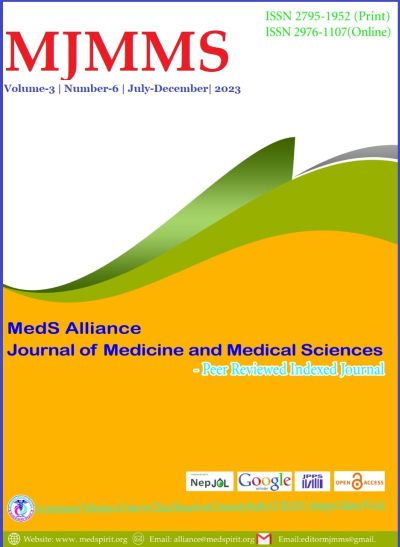Knowledge Regarding Intravenous Therapy among Health Workers of a Teaching Hospital Birgunj, Parsa, Nepal
DOI:
https://doi.org/10.3126/mjmms.v3i6.66557Keywords:
Health workers, Intravenous therapy, KnowledgeAbstract
INTRODUCTION: Intravenous fluid is a continuous process of administration of large amount of fluid into the vein by a drip apparatus. The main purpose of intravenous therapy is to supply fluid and electrolyte to prevent or treat fluid and electrolyte imbalance in the body. The intravenous drug injected through vein into the body for quick action. At the time of infusion the nurse check or observe the flow rate of fluid for any adverse affect and also for others complication. Globally more than 330 million people receive invasive procedure of intravenous catheter placement annually. 60% to 90% patients require an intravenous catheter during hospitalization in US and studies said that 35%-50% patient is in fail intravenous catheters in hospitalization and arise complication. The objective of the study was to find out the knowledge regarding intravenous therapy among health workers of Teaching Hospital Birgunj, Parsa.
MATERIALS AND METHODS: A descriptive cross sectional study design was adopted for the study. This carried out in national medical college teaching hospital is a tertiary level Hospital, Birgunj, Nepal, with the sample size of 139. The instruments used for the study was a structured knowledge questionnaire was used in the study, after reviewing related literatures, which consists of 28 items and data were collected within 2 weeks.
RESULTS: Among 139 health workers, 43.2% had moderate level of knowledge, 33.1% had low level of knowledge and 23.7% had adequate level of knowledge.
CONCLUSION: From the study finding it can be concluded that knowledge regarding intravenous therapy among respondents had moderate level of knowledge. Hence, various educational programmes for health workers should be focused on enhancing their knowledge regarding intravenous therapy which enables them to provide quality care for patients.
Downloads
Downloads
Published
How to Cite
Issue
Section
License

This work is licensed under a Creative Commons Attribution-NonCommercial 4.0 International License.




